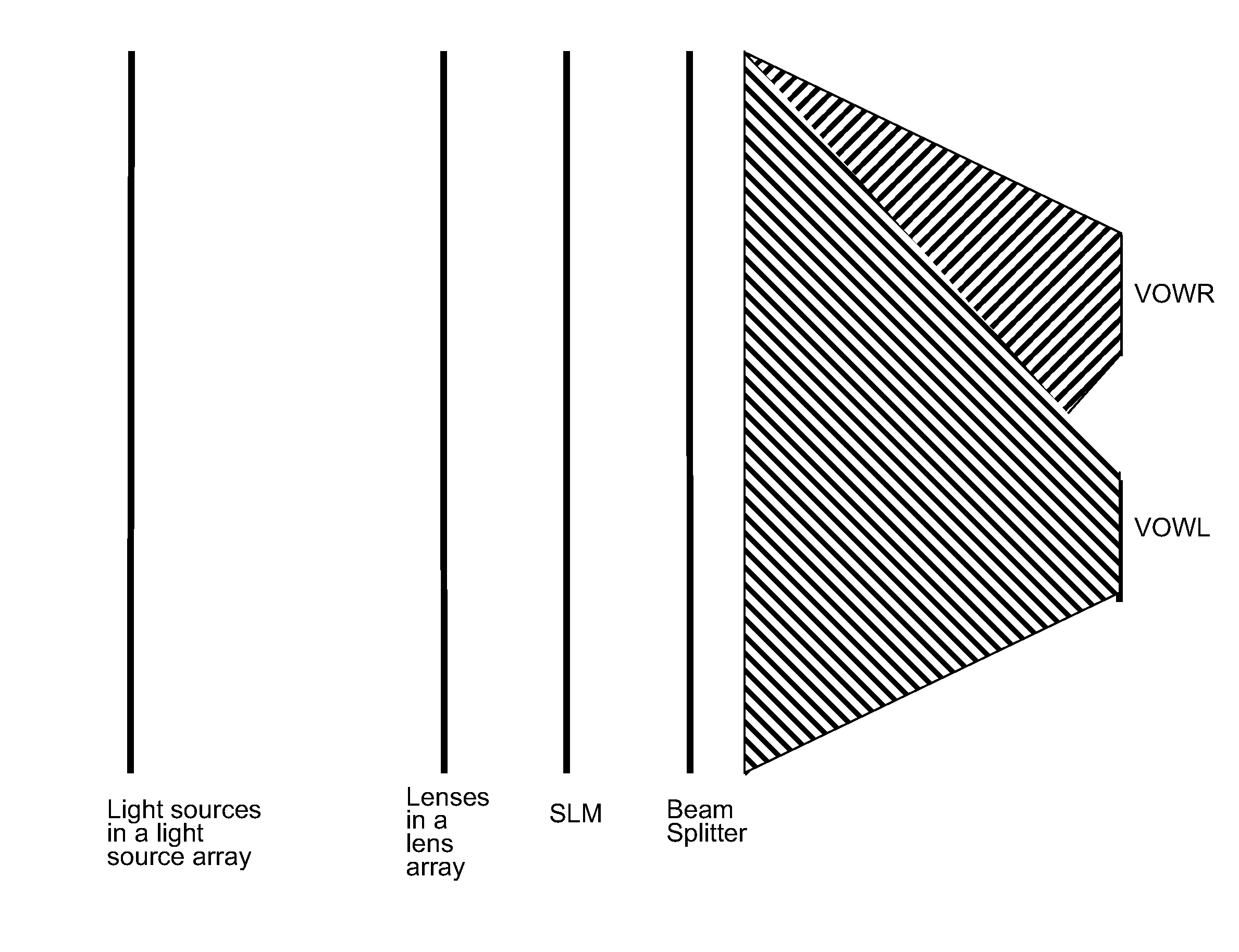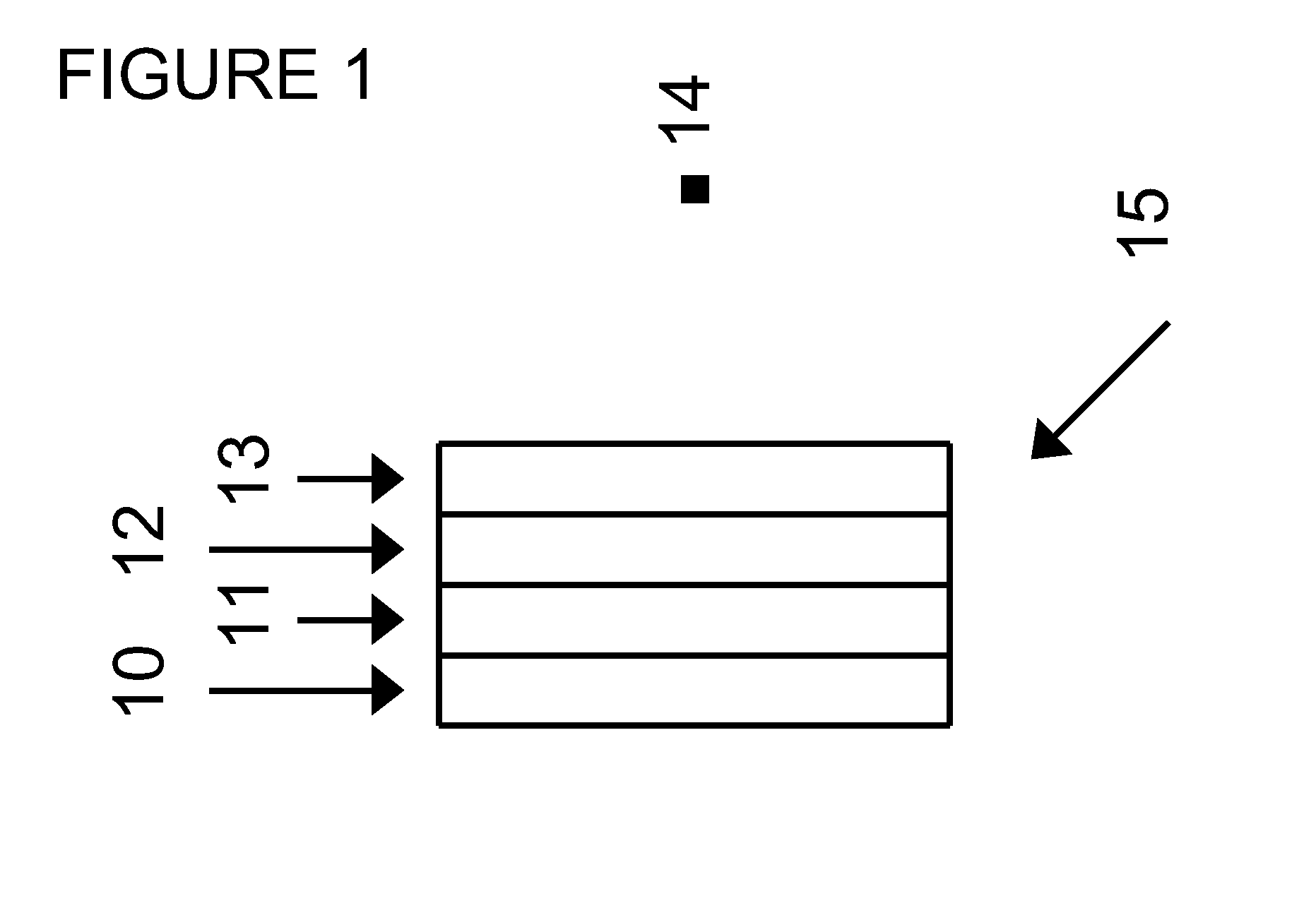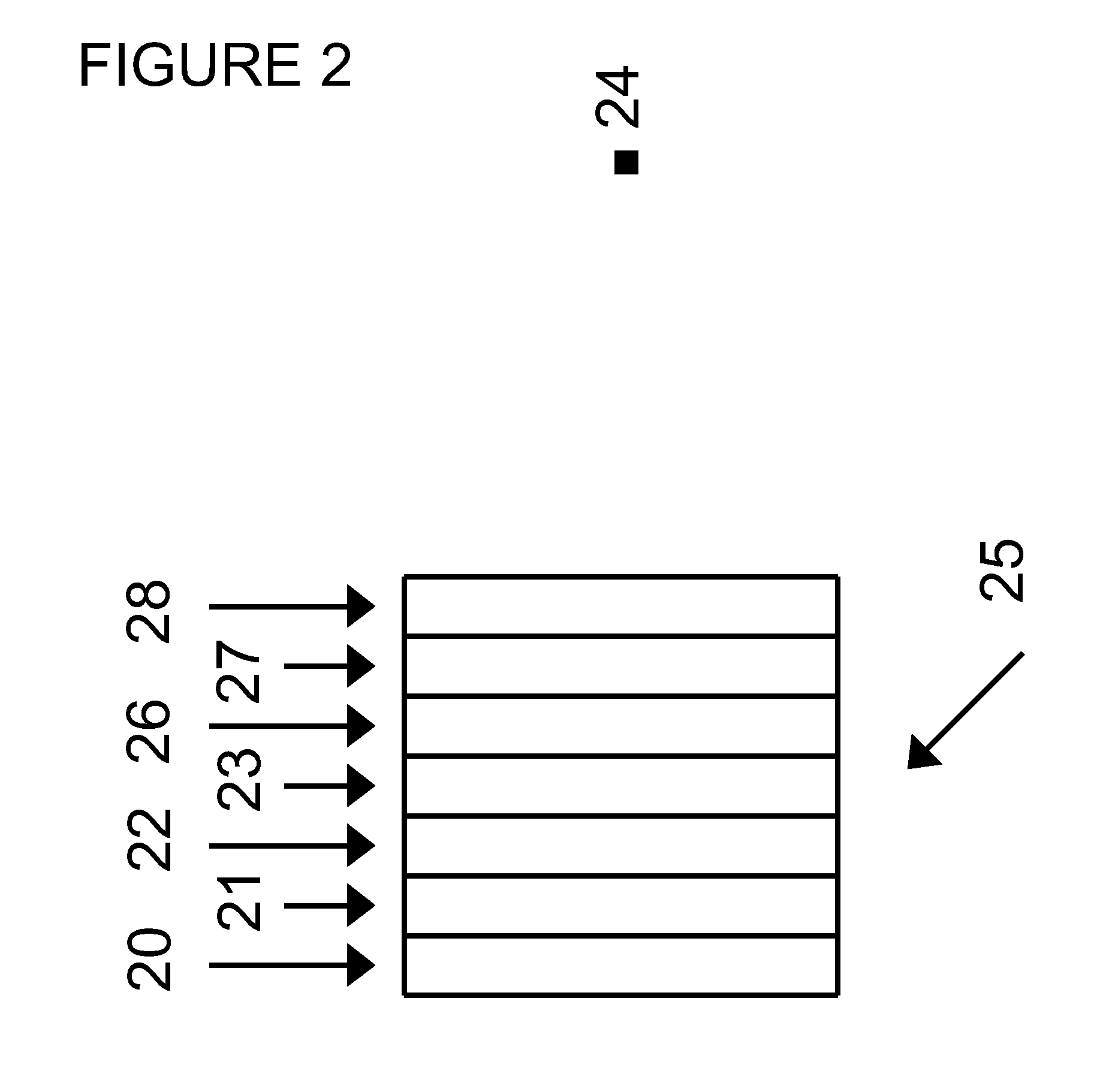Holographic display device
a display device and holographic technology, applied in the field of holographic display devices, can solve the problems of small display devices, complex optical systems, and inconvenient operation,
- Summary
- Abstract
- Description
- Claims
- Application Information
AI Technical Summary
Benefits of technology
Problems solved by technology
Method used
Image
Examples
Embodiment Construction
[0065]Various implementations will now be described.
A. Compact Combination of an Infra Red OLED Display and OASLM
[0066]This implementation provides a compact combination of an OASLM and an infra red light emitting display which can write a pattern on the OASLM, the combination being capable of generating a three dimensional image under suitable illumination conditions.
[0067]An OASLM comprises a photosensor layer and a liquid crystal (LC) layer which is located between conducting electrodes. When a voltage is applied to the electrodes, a light pattern incident on the photosensor layer is transferred to the LC layer where it is used to modulate a read beam. In prior art, the incident light pattern is provided by a write beam that is modulated by an electrically addressed spatial light modulator (EASLM). The EASLM is illuminated by a light source and imaged onto the OASLM. Usually, the write beam is incoherent to avoid speckle patterns whereas the read beam is coherent to enable the ge...
PUM
 Login to View More
Login to View More Abstract
Description
Claims
Application Information
 Login to View More
Login to View More - R&D
- Intellectual Property
- Life Sciences
- Materials
- Tech Scout
- Unparalleled Data Quality
- Higher Quality Content
- 60% Fewer Hallucinations
Browse by: Latest US Patents, China's latest patents, Technical Efficacy Thesaurus, Application Domain, Technology Topic, Popular Technical Reports.
© 2025 PatSnap. All rights reserved.Legal|Privacy policy|Modern Slavery Act Transparency Statement|Sitemap|About US| Contact US: help@patsnap.com



